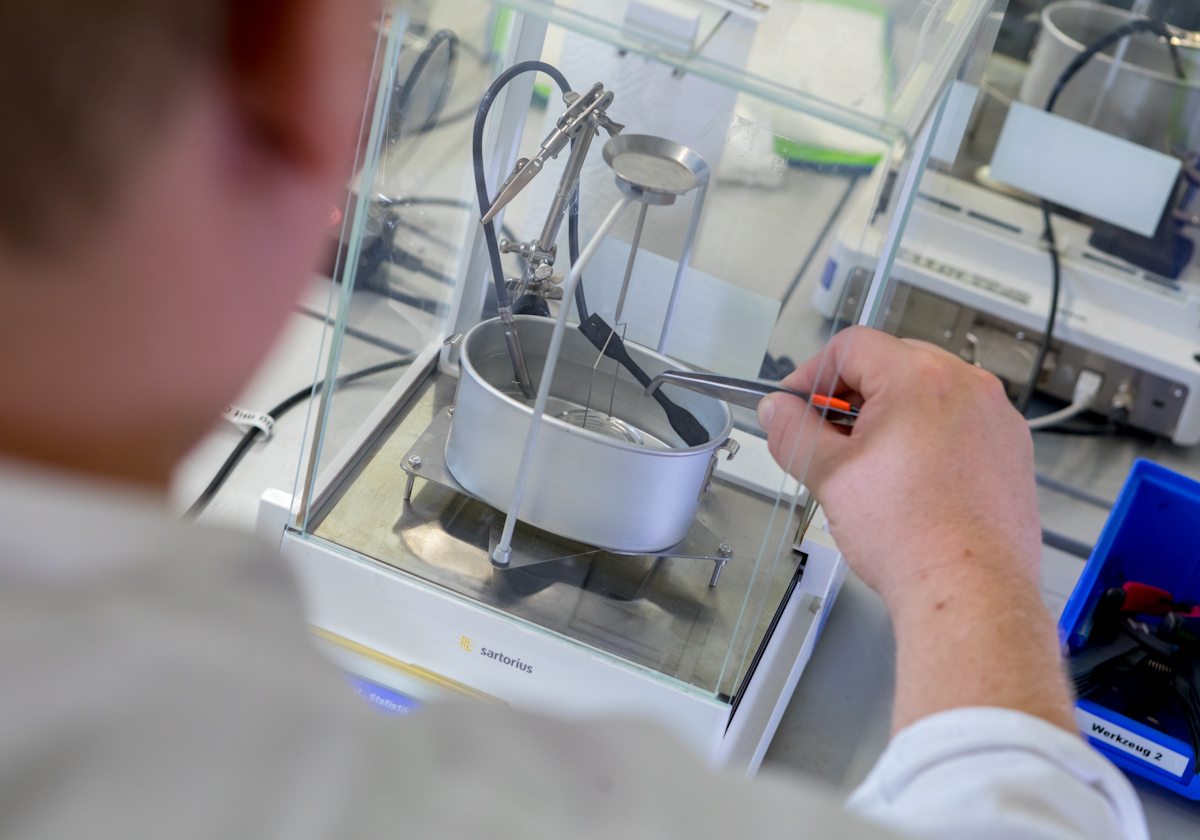Significance and Test Method
The density is a characteristical material property which is independent of the shape and size of a body. This material constant describes the mass of a body in relation to its volume. There are different methods to determine the density of a body.
Significance for Application Technology
Together with the measurement of hardness and component dimensions, the density test is one of the three most important parts of the identity verification process. Therefore, it is often carried out as part of an incoming goods inspection.
The Density Test
We determine the density of elastomers or thermoplastic elastomers using the Archimedes principle. These test methods are described in the standards DIN EN ISO 1183-1 or ISO 2781.
A test specimen is first weighed in air and then in a liquid with a well-known density. Using the buoyancy of the test specimen in the different media, the density of the material under test can be calculated with special density scales.
The density of an elastomer material is not only influenced by the base rubber, but also by all fillers and additives contained in the elastomer compound. Since the proportions and weights of the ingredients of an elastomer compound are subject to permissible tolerances depending on the formulation, there are typical density ranges for the individual elastomer families.
For example, the typical density range of fluorocarbon rubber FKM is 1,90 – 2,60 g/cm³.
Downloads
You can find further information on density testing based on Archimedes’ principle and the density values of elastomers in our technical reports:
Identity tests for elastomers - hardness and density
Within the scope of an identity test, certain material properties are examined on components of a test lot and checked for conformity with the reference values from the sampling. On elastomer components, the density and hardness of the component material are usually determined in addition to the dimensions.


